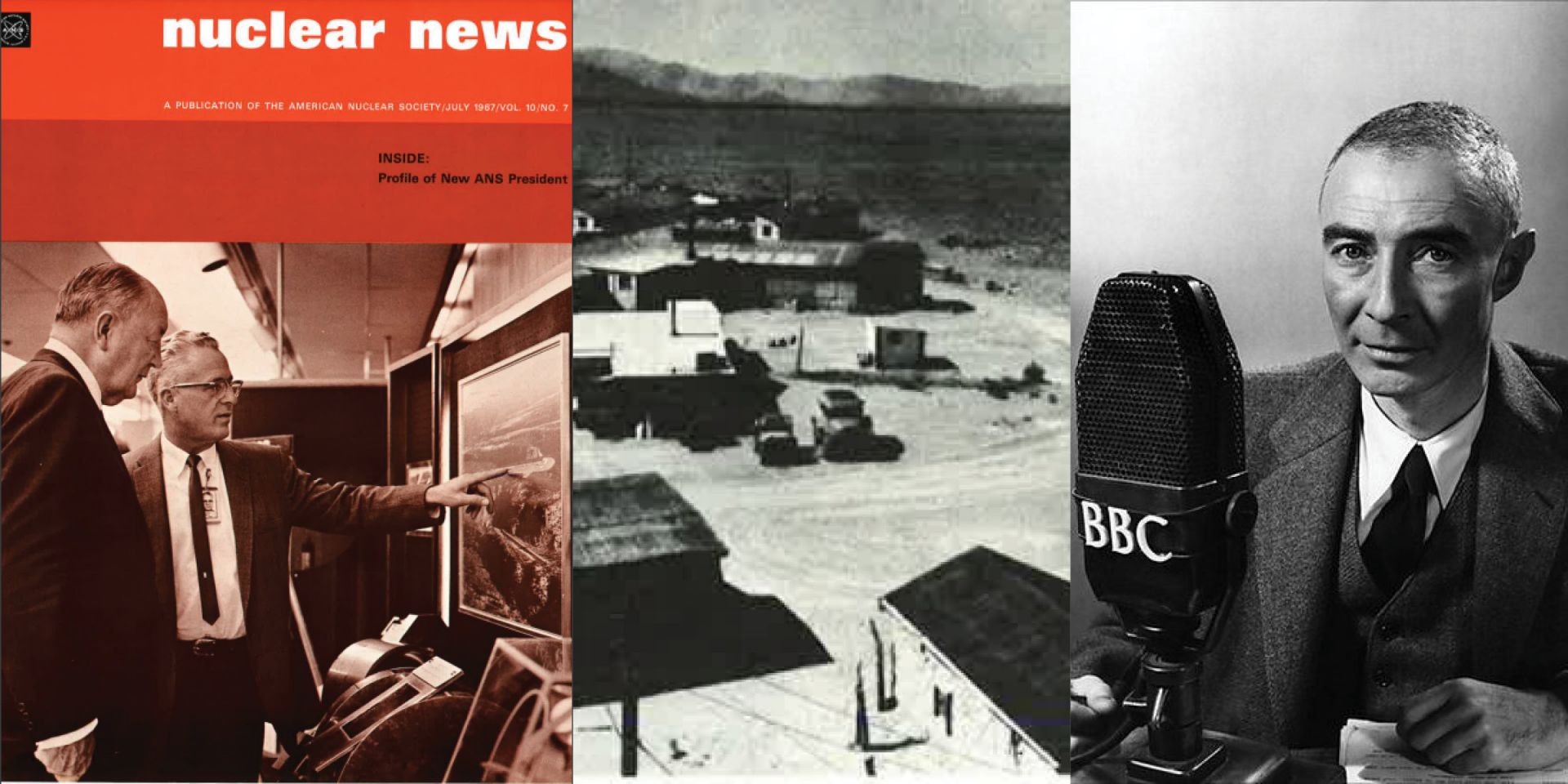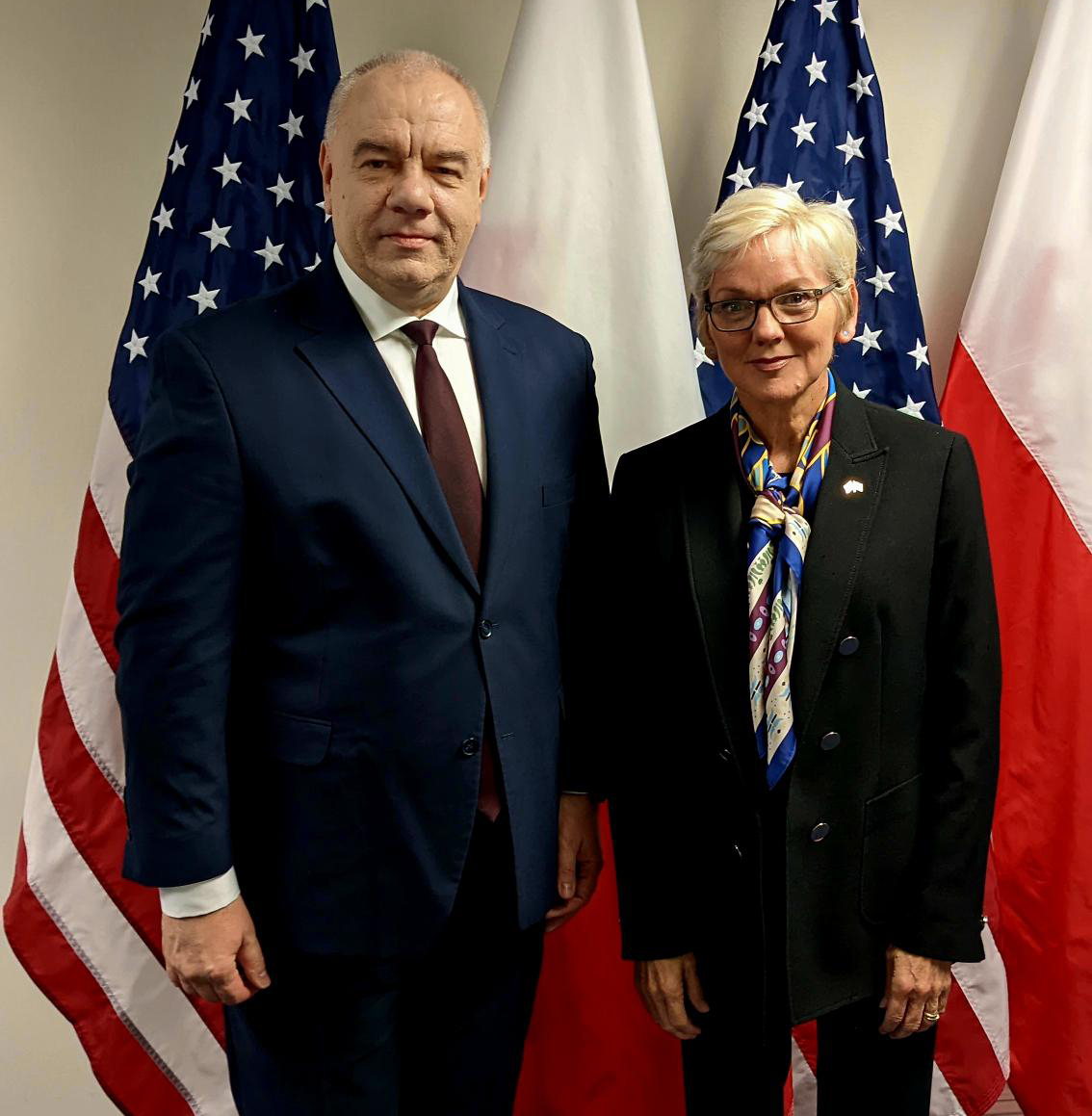Amazon investing in SMRs to deploy 5 GW by 2039

Tech giant Amazon announced Wednesday new partnerships with Dominion Energy and X-energy to develop and deploy 5 gigawatts of nuclear energy to power needs across the country over the next 15 years.


Tech giant Amazon announced Wednesday new partnerships with Dominion Energy and X-energy to develop and deploy 5 gigawatts of nuclear energy to power needs across the country over the next 15 years.

The 2024 American Nuclear Society Annual Conference opened with a bang yesterday as 1,200 attendees gathered in Las Vegas to network, collaborate, and socialize. Honors and awards were presented to several recipients, and ANS welcomed twelve new Fellows.
The plenary opened with an address from ANS Executive Director/Chief Executive Officer Craig Piercy that brought this year’s theme to the fore straight away: The time is now to deploy new nuclear projects—and not acting at this moment is simply not an option.

A bipartisan group of nine House members is calling on the Department of Energy to give “fair, full, and swift consideration” to Holtec International’s application for DOE Loan Programs Office funding to restart the company’s Palisades nuclear plant, closed last year by the facility’s previous owner, Entergy.

Energy secretary Jennifer Granholm visited the Clinch River Nuclear Site in Oak Ridge, Tenn., on December 5 to highlight the Biden administration’s support for the Tennessee Valley Authority’s advanced nuclear technology program.
Granholm indicated that the administration is willing to provide funding for the nation’s first commercial small modular reactor at the site. “Excited to see a shovel in the ground, hopefully in a few more years,” she said. “TVA is leading on small modular reactors with this site. Everybody’s looking to TVA to make sure that this can actually happen.”

Holtec International’s ongoing effort to repower Michigan’s closed Palisades nuclear plant made progress this week with the signing of a power purchase agreement (PPA) between the firm’s Holtec Palisades Energy LLC subsidiary and Wolverine Power Cooperative, a not-for-profit energy provider to the rural communities across Michigan.

Johnson

Duncan

McMorris Rodgers
A trio of GOP House lawmakers is asking four federal agencies to report on their progress toward implementing National Environmental Policy Act (NEPA) reforms included in the 2023 Fiscal Responsibility Act (FRA), signed by President Biden in early June.
Last Friday, House Energy and Commerce Committee chair Cathy McMorris Rodgers (R., Wash.); Energy, Climate, and Grid Security Subcommittee chair Jeff Duncan (R., S.C.); and Environment, Manufacturing, and Critical Materials Subcommittee chair Bill Johnson (R., Ohio) sent letters to the Department of Energy, Nuclear Regulatory Commission, Environmental Protection Agency, and Federal Energy Regulatory Commission.
The Department of Energy is holding an initial Industry Day on July 28 that is open to parties with proven experience in implementing successful clean electricity projects generating 200 MW or larger.

Granholm
Secretary of energy Jennifer Granholm recently discussed the future of clean energy with Christopher M. Matthews, the U.S. energy editor for the Wall Street Journal. The May 15 live Q&A focused on Granholm’s perspective on the Biden administration’s policies for decarbonization and energy security. Granholm, who mentioned nuclear briefly at beginning of her remarks, returned to the issue at the end of the half-hour interview. In her answer to Matthews’s question, she addressed nuclear industry incentives, safety and waste concerns, next-generation technologies, and fusion.
Fossil fuels? Matthews opened the discussion by noting President Biden’s signing of the Inflation Reduction Act (IRA) last year, allocating “billions of dollars in tax credits and federal loans to boost green energy, including electric vehicles, hydrogen production, and more.” He added, “At the same time, the administration has called on oil and gas producers to increase drilling to slow inflation and to tamp down energy prices.”

The Palisades nuclear power plant may have entered retirement, but it’s not dead yet. Plant owner Holtec International is continuing with its unprecedented effort to restart the Covert, Mich., single-unit facility, shuttered 11 months ago by previous owner Entergy.
The Department of Energy last week announced up to $450 million in funding from the Bipartisan Infrastructure Law to advance clean energy demonstration projects at current and former mine sites. The law, officially the Infrastructure Investment and Jobs Act, was signed by President Biden in November 2021.

Paris Ortiz-Wines
“Nuclear is finding its way into real acceptance and enthusiasm, and that’s really exciting.” So said secretary of energy Jennifer Granholm at the COP27 climate conference last November.
For the past 65 years, humanity has harnessed the power of the atom. Since the grid connection of the world’s first commercial nuclear plant in 1957, nuclear has been an unsung hero in providing reliable, clean energy for generations. Nuclear is the world’s fourth-largest source of energy and the second-largest low-carbon source of energy, per Our World in Data.
And yet, it wasn’t until September of 2021, when it became increasingly clear that the world was entering an energy crisis, that nuclear found its way back into the spotlight. Five months later, with the invasion of Ukraine, countries dependent on Russian gas found themselves in a precarious and costly position.
The Department of Energy has announced the release of application guidance for the second award cycle of its $6 billion Civil Nuclear Credit (CNC) Program.
Part of the Infrastructure Investment and Jobs Act—the $1.2 trillion bipartisan measure signed by President Biden in November 2021—the CNC Program was established to prevent the premature retirement of economically challenged nuclear power plants in recognition of the crucial role the Biden administration sees nuclear playing in achieving its ambitious decarbonization goals, including 100 percent clean electricity by 2035.

“Star Power” is the name 60 Minutes producers gave their interpretation of the recent experiment at the National Ignition Facility (NIF) that achieved fusion ignition and net gain. Views from inside Lawrence Livermore National Laboratory captured by TV cameras and aired Sunday, January 15—of some of NIF’s 192 lasers, banks of capacitors, target assembly labs, and even the remains of the target assembly blasted in the December 5 breakthrough—are well worth the watch for those of us who are unlikely to visit the site in person.

Researchers at Idaho National Laboratory have completed initial testing on a newly developed fuel test capsule that is expected to provide crucial performance data for sodium-cooled fast reactors. The Department of Energy announced on January 12 that the series of fuel testing experiments being carried out now at INL’s Transient Reactor Test Facility (TREAT) was developed through a joint project between the United States and Japan.

On December 16 the Department of Energy reversed a decision made nearly 70 years ago by leaders of its predecessor agency, the Atomic Energy Commission, to revoke the security clearance of J. Robert Oppenheimer, the scientist who led the first group of scientists and engineers at what would eventually become Los Alamos National Laboratory as they built the first atomic bomb. While it comes far too late for Oppenheimer, his family, and his colleagues to appreciate, the McCarthy-era campaign to discredit Oppenheimer is now itself officially discredited as “a flawed process that violated the Commission’s own regulations,” in the words of the DOE’s recent announcement.
Oppenheimer’s story has been told many times by biographers and chroniclers of the Manhattan Project; a new feature film is expected in July 2023. Today, we offer a #ThrowbackThursday post that examines the scant coverage of Oppenheimer’s life and work in the pages of Nuclear News to date and draws on other historical content—and the DOE’s recent move to correct the record—to fill a few of the gaps.

Holtec International is apparently not ready to give up on the Palisades nuclear power plant just yet. Despite having been denied federal funds last month for a possible reopening of the Covert, Mich., facility, the company this week announced its intention to reapply.

Pacific Gas & Electric’s two-unit Diablo Canyon plant—California’s lone operating nuclear power facility—has been deemed eligible for the initial round of funding from the Civil Nuclear Credit (CNC) Program, the Department of Energy announced yesterday.
The decision was welcomed by a nuclear community disappointed by last Friday’s news that the DOE had rejected Holtec International’s CNC application for the recently closed Palisades nuclear plant in Michigan, despite support for the effort from Gov. Gretchen Whitmer.

Duncan
Rep. Jeff Duncan (R., S.C.), a member of the House Energy and Commerce Committee, has issued a three-page “Blueprint for Nuclear Innovation and Competitiveness,” highlighting nuclear policy priorities in the areas of licensing and regulatory modernization, financing, and fuel (including used fuel). According to a press release from Duncan’s office, the document aims “to help chart the course for the nuclear energy agenda in the next Congress and facilitate policy discussions among both lawmakers and industry leaders.” Published last week—along with a related “Dear Colleague” letter—the blueprint is also, according to E&E News, “a sign of his ambitions for landing a more senior role with the committee,” including a subcommittee leadership position should the GOP gain control of the House in the next Congress.

Morawiecki
Poland has chosen Westinghouse Electric Company to supply the reactors for its initial nuclear power plant, as the Central European nation seeks to lessen its dependence on domestic coal and Russian imports for its energy supply. On Friday, Polish prime minister Mateusz Morawiecki announced the decision on Twitter, confirming last week’s reports that Westinghouse’s AP1000 technology was the government’s likely choice.
“A strong [Polish-American] alliance guarantees the success of our joint initiatives,” Morawiecki tweeted. “After talks with [vice president Kamala Harris and energy secretary Jennifer Granholm], we confirm our nuclear energy project will use the reliable, safe technology of [Westinghouse].”
Competing with the American firm for the job were Électricité de France and Korea Hydro & Nuclear Power. In October 2021, EDF submitted an offer to build four to six EPRs in Poland, while KHNP offered in April of this year to construct six APR1400 units.

Poland’s deputy prime minister Jacek Sasin and U.S. energy secretary Jennifer Granholm meet in Washington on October 23. (Photo: gov.pl)
Following a meeting in Washington, D.C., on Sunday with secretary of energy Jennifer Granholm, Polish deputy prime minister Jacek Sasin told reporters that his nation is close to choosing the reactor supplier for its initial nuclear plant project, adding, according to Bloomberg, “There is a big chance that we will finally pick Westinghouse.”
And in a news release on the meeting from the Polish government, Sasin is quoted as saying, “The massive energy crisis that is currently affecting us means that we must quickly make decisions on building the country’s energy security based on new, clean, cheap, and reliable sources, and such a source is nuclear energy. We want the decisive decisions to be made as soon as possible. That is why we asked [Granholm] for a meeting, during which we will clarify all the issues that remain to be clarified.”